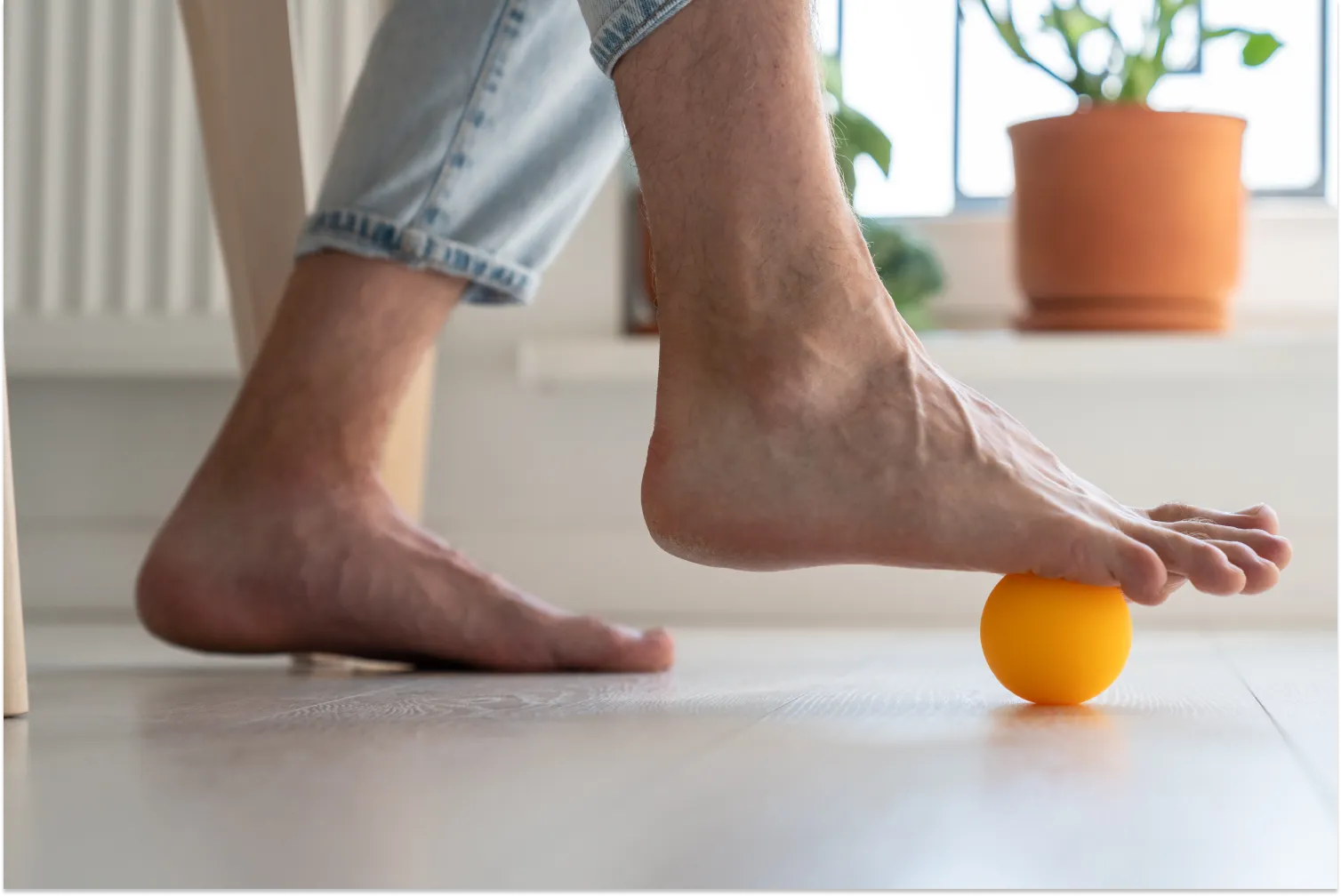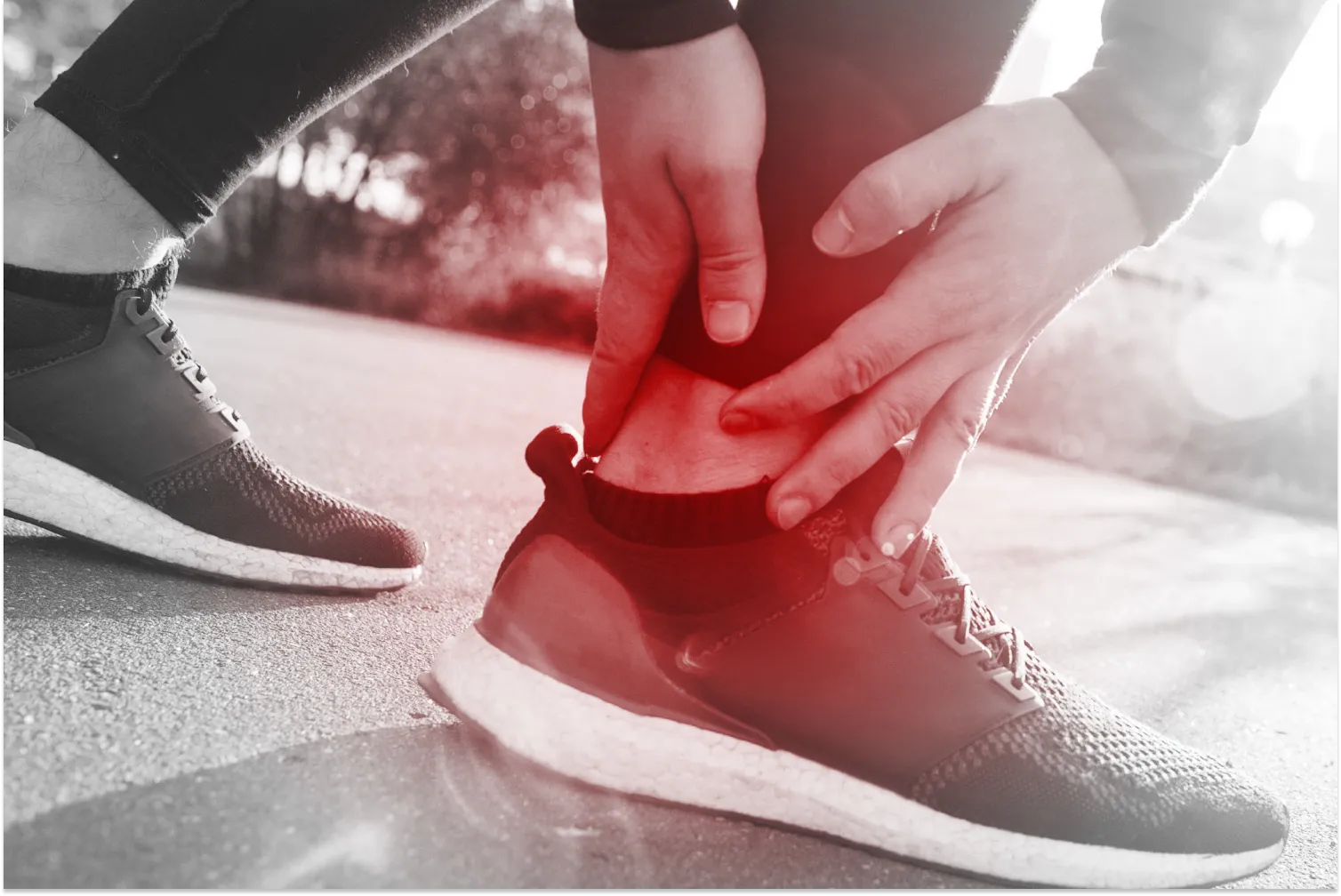Medically Reviewed By | Johannah Gregg, DNP FNP-C
The knees are the largest joints in our bodies and comprise many small moving parts — bone, cartilage, muscle, and tendon. They are a central part of most movements, which puts them under a bit more daily pressure than, say, the elbows.
For athletes and those who live an active life, the knee joints are put under great stress and strain, turning them into a vulnerability. Excess running, jumping, pivoting, and bending (and falling and taking hits for contact athletes) can cause many knee issues.
Because of this, it is very common for athletes to turn to forms of support, in a variety of different scenarios and for a variety of different use cases. So what tools do active people use to protect and heal their knees?
One of the most common and widely used tools is a knee brace. We will explore several types of knee braces and what they do to keep people healthy and help them heal when something goes wrong.
What Are Knee Braces?
Knee braces are physical supports you wear while you’re active or resting. They all work to support your knees and prevent knee injury, but different braces employ different methods to accomplish this.
Braces can use elastic fabric, plastics, metals, foam, and straps, ranging in size from very lightweight and minimal to heavier and bulkier cage-like devices.
What Are Knee Braces Used For?
In what situations and for what functions do people turn to knee braces?
Prophylactic
Prophylactic knee braces can protect the knee joint and prevent injury. This brace is most common in contact sports like football, which are common in sports medicine.
Functional
Functional braces can provide knee support to an already sore, achy, painful, or injured knee during physical activity. One common form of functional knee brace is a neoprene sleeve with a cutout to help stabilize your patella (or kneecap) during everyday activity.
Rehabilitation
Heavy-duty knee braces can limit the movement of the joint in the way a cast does; these are given to people recovering from knee surgery or more severe injury, such as a torn meniscus or anterior cruciate ligament (ACL) surgery. Rehabilitative braces that provide extra support usually pair with physical therapy.
Active Recovery
Some braces, such as unloader knee braces, can also serve the purpose of helping someone recover after a workout. There doesn’t have to be an explicit injury or pain to wear a knee brace.
When Should You Use a Knee Brace?
Talk to a Doctor
If you think you may have injured your knee or have any underlying knee conditions, you should seek a qualified healthcare provider or orthopedic doctor. They will run diagnostics to detect any issues and may prescribe or recommend a specific type of brace based on their findings.
Use As Needed
If your doctor clears you or concludes that you haven’t injured your knee, it is up to you which knee brace you should buy and when and how to use it.
What Knee Conditions Can Braces Help?
Here are a few common things that can go wrong with knees and how a brace can support them.:
Knee Sprains
Ligaments are a type of tissue that hold other hardware, like bone and muscle, together. When the knee moves in a way where the fibers in the ligaments overstretch, it results in a sprain. Pain levels can differ depending on how many fibers overstretch and how far, but expect some swelling.
Knee Tears
Worse than a sprain, if any one of the four main ligaments in the knee, ACL, MCL, PCL, or LCL, partially or fully tears, it should be treated as a serious injury, and you should talk to a doctor as soon as possible. If you make a movement and hear a popping noise, followed by swelling, pain, and an inability to put any pressure on your leg, this may be the case.
Runner’s Knee
Formally known as Patellofemoral Pain Syndrome, this is more of a chronic condition of the knee rather than an acute injury. It can range from mild to severe and includes pain in the front of the knee and kneecap.
It is caused by one or more of the following underlying factors.
Excess Use
Too many exercises involving explosive motions can wear out your knees. Practice intense squat jumps and lunges in moderation.
Bone Alignment
If any of the bones throughout your leg are out of position, it can put excess pressure on the kneecap, leading to Runner’s Knee.
Foot Problems
A lack of structure in your arches and overpronation can change how you walk, leading to knee problems.
Thigh Muscle Weakness
The kneecap relies on support from the surrounding muscles. If these muscles are weak, it can lead to instability in the knee.
Chondromalacia Patella
When the cartilage under the kneecap deteriorates, it can lead to unwanted rubbing between certain tissues.
This condition is not exclusive to runners — if you think you may have any of these underlying conditions, seek medical help and go from there. A knee brace may be the right remedy.
Natural Aches and Pains
The last condition worth mentioning isn’t exactly an injury or a syndrome caused by an underlying issue. Many people on fitness plans will experience a degree of knee pain, soreness, and achiness due to the body’s natural healing process.
After a tough workout or a long run, you’ve broken down muscles and other tissues in your body. As it repairs itself, it is natural to feel some mild to moderate symptoms in your knees. If you’ve ruled out any acute injuries, this is most likely what you’re experiencing.
Keep reading to learn about the different types of knee braces and how they may help you with any of these conditions.
What Are the Types of Knee Braces?
Here are the categories that most knee braces fall into:
Strap Brace
Knee straps are the smallest type of brace in overall size. They are a thin band that goes around the knee (directly on the skin, underneath or on top of clothing), and they target the patellar tendon to aid in kneecap tracking.
Because of this, they are best for treating symptoms of Runner’s Knee. Straps are pretty specific in focus and don’t provide much support beyond this use.
Sleeve Brace
Sleeves are usually made out of stretchy or flexible fabric and slide onto the knee by way of the foot. They cover the bottom of the thigh to the top of the shin, can fit underneath clothing, and are designed to aid with mild to moderate knee problems. Sleeve braces can support the front or back of the knee.
Many knee sleeves attempt to help by utilizing compression. However, as you’ll see in the next section, other options can work better.
Wraparound Brace
Knee wraps are just like sleeves, but with a few small differences. They are wrapped around the joint with velcro, allowing you to adjust the tightness. Because of this customization, some may find them more comfortable. They can also be thicker than sleeves, potentially giving the knee more structural support.
Again, if you come across braces marketed as compression wraps, other options are more beneficial to your body.
Hinge Brace
Hinged knee braces mostly use metal and can come with one or two hinges. They provide the highest level of support out of any type of brace, but they are also the heaviest and bulkiest in size. The main use case for hinge braces is aiding in the recovery of moderate sprains and sometimes tears.
Although they provide excellent structural stability and support, they don’t do anything beyond this to aid your body in its natural healing process.
Incrediwear Knee Sleeve
For many reasons, our innovative Knee Sleeve is a better knee brace than the traditional options.
How It Works
This knee brace uses fabric embedded with a specific type of semiconductor. When the fabric touches the skin, it sends negatively charged ions into the body, activating the cells and increasing blood flow and speed in your knee.
This is the best support form as it works with your body’s natural healing process. Blood carries oxygen and nutrients to the tissues, making them more resilient and helping them repair faster.
Why It's Different
Traditional compression sleeve knee braces can cut off blood supply to the knee, almost like a tourniquet. While this may provide some temporary relief during activity, there is little to no evidence to back up that it has any benefits. Compression works against your body's natural tendencies, while Incrediwear works with it for your wellness.
When To Use It
Our knee sleeve is highly breathable and flexible, leaving you with your full range of motion. This makes it suitable to wear in a multitude of different situations. Slide it on for any activity — a workout, a run, a recovery activity, and it’s even great for competitions because it won’t get in your way.
It’s also great during rest periods — put it on while you recuperate from a hard workout on the couch. It’s comfortable enough that you can even wear it to bed and soak up its healing energy overnight.
Conclusion
For athletes and people who enjoy being active, the knee can be extra prone to pain and injury. In many cases, knee braces can help curb issues, whether for general wear and tear, injury, post-surgery recovery, or as a preventative or protective measure.
Unless a doctor suggests otherwise, the Incrediwear knee sleeve has you covered. You can also check out our other incredible sleeves and braces for different body parts!
Sources:
Patellofemoral pain syndrome - Symptoms and causes | Mayo Clinic
Knee Sprains & Strains | NYU Langone Health
Knee Pain (Chondromalacia Patella): Causes, Symptoms & Treatment | Cleveland Clinic
Read more

Medically Reviewed By | Johannah Gregg, DNP FNP-C If you experience poor circulation in the feet, you’re likely all too familiar with the less-than-pleasant side effects of this condition. From a s...

Medically Reviewed By | Johannah Gregg, DNP FNP-C Ankle injuries are an unfortunate yet common part of our active lives. From simple missteps on uneven grounds to rigorous athletic activities, the ...






2 comments
Hi Carla, it would normally be absolutely fine to use our knee sleeve for both knees! If in doubt, please check with your doctor or physiotherapist.
Incrediwear Team
I have had my left knee replaced and need to do my right. I teach tennis and until I can do this what type should I use on both knees? They both tend to swell a good bit.
Carla Brangenberg
Leave a comment
All comments are moderated before being published.
This site is protected by hCaptcha and the hCaptcha Privacy Policy and Terms of Service apply.